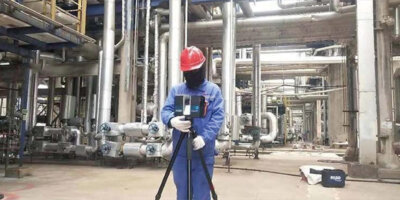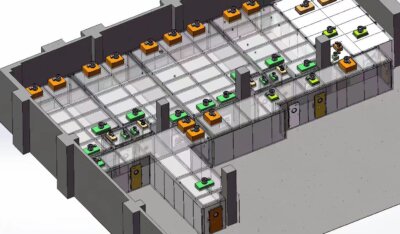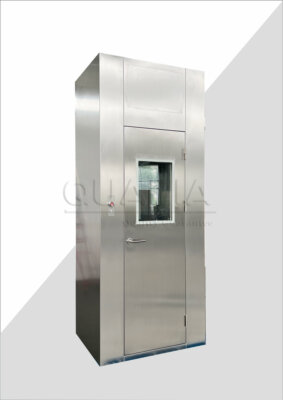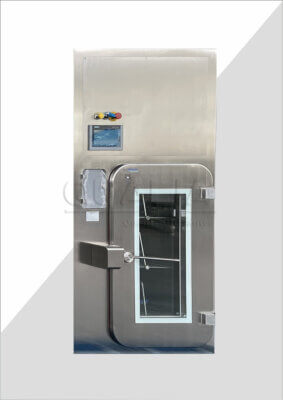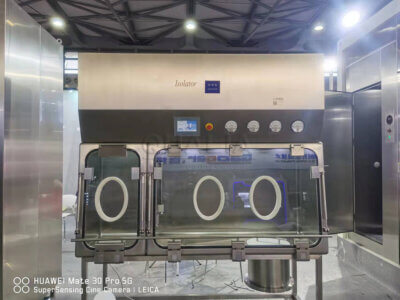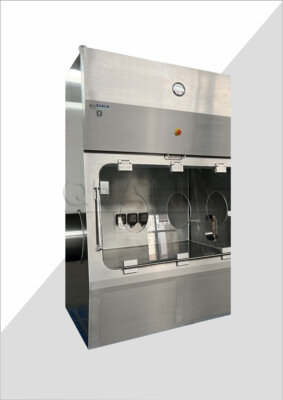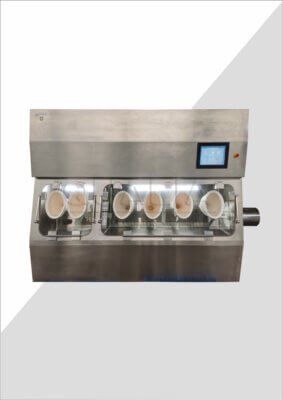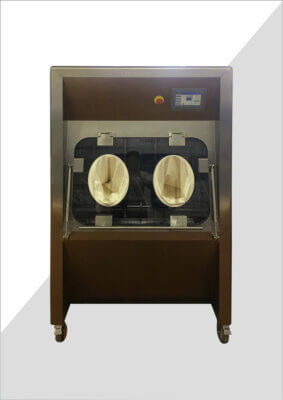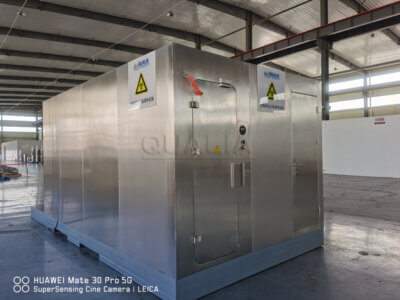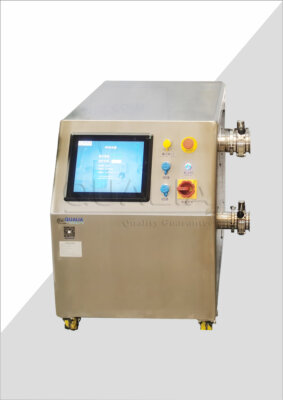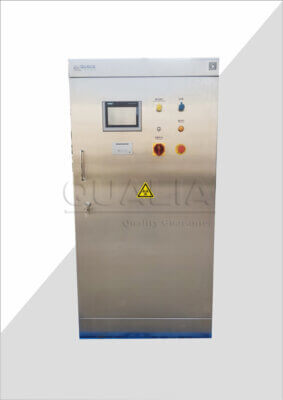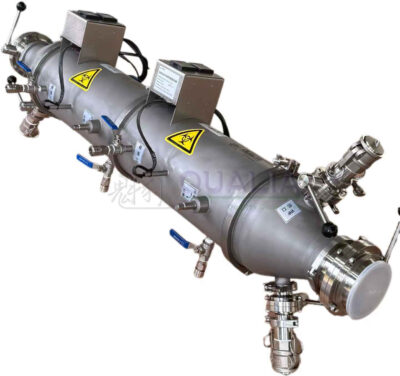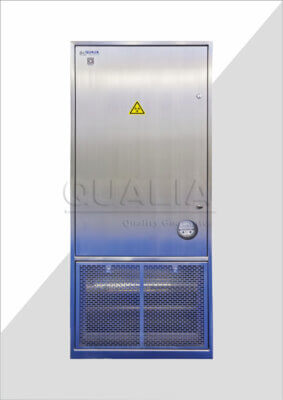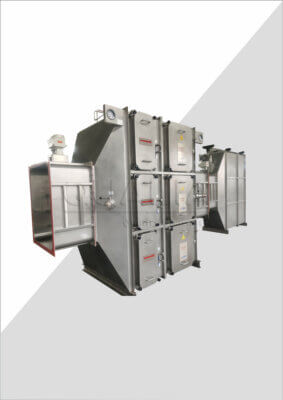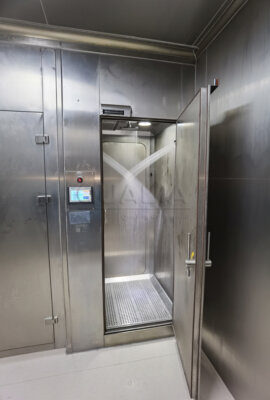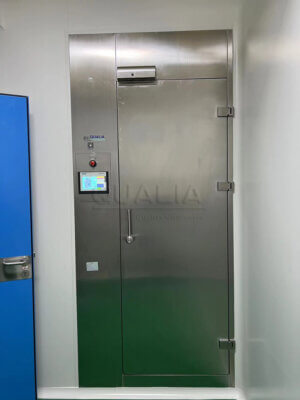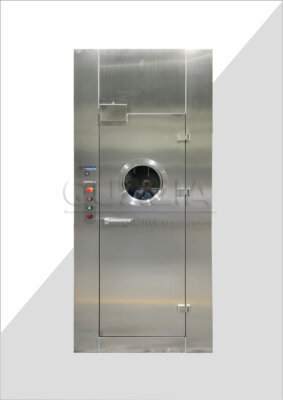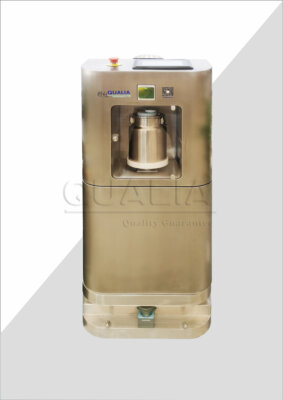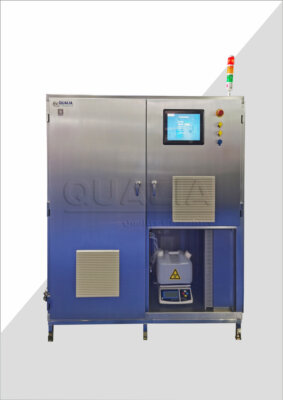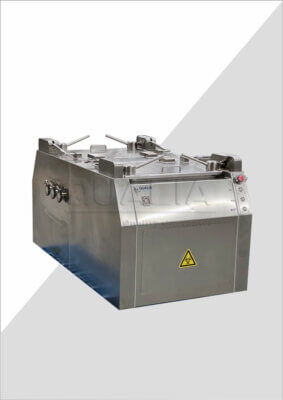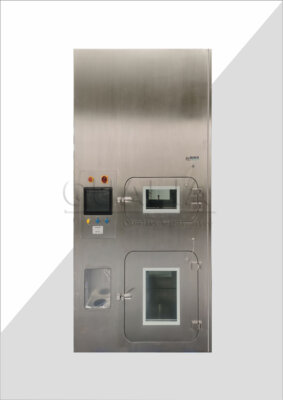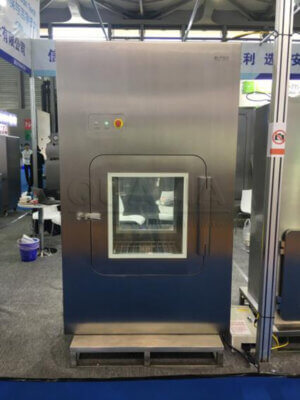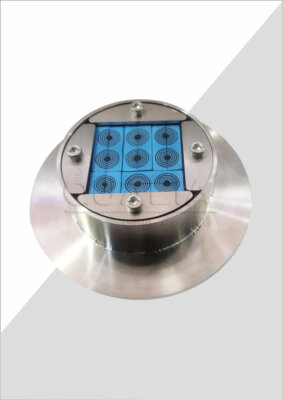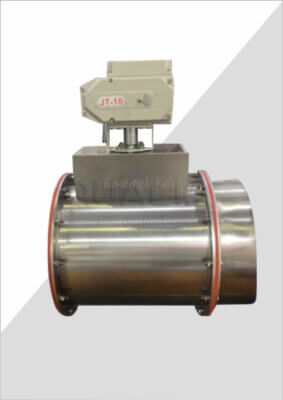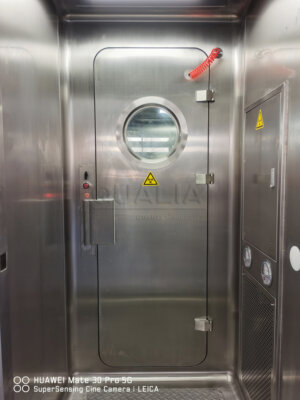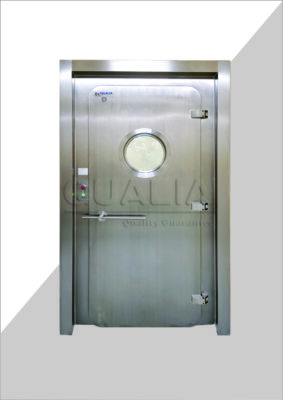Continuous flow systems have revolutionized various industries, offering efficient and streamlined solutions for complex processes. Among the leaders in this field, BioSafe stands out with its innovative Effluent Decontamination System (EDS), designed specifically for handling liquid waste in biosafety level 2, 3, and 4 facilities. This cutting-edge technology exemplifies the power of continuous flow in enhancing safety, efficiency, and environmental responsibility in critical laboratory settings.
BioSafe's EDS represents a significant leap forward in the management of potentially hazardous liquid waste. By employing a continuous flow approach, this system ensures that biological contaminants are effectively neutralized without interruption, maintaining a constant state of safety and compliance. The seamless operation not only improves the overall efficiency of laboratory operations but also significantly reduces the risk of exposure to dangerous pathogens.
As we delve deeper into the world of continuous flow systems, particularly in the context of BioSafe's EDS, we'll explore how this technology is reshaping the landscape of biosafety and waste management. From its core principles to its practical applications, we'll uncover the myriad benefits and innovative features that make continuous flow EDS an indispensable tool in modern research facilities.
BioSafe's Effluent Decontamination System (EDS) utilizes continuous flow technology to provide unparalleled safety and efficiency in the treatment of liquid waste from high-containment laboratories.
How Does Continuous Flow EDS Enhance Laboratory Safety?
The implementation of continuous flow systems in laboratory settings, particularly in the realm of effluent decontamination, marks a significant advancement in biosafety protocols. BioSafe's EDS harnesses this technology to create a robust barrier against potential biological hazards, ensuring that liquid waste is consistently and thoroughly treated before leaving the facility.
At its core, the continuous flow EDS operates on the principle of uninterrupted processing. Unlike batch systems that treat waste in discrete quantities, the continuous flow approach allows for a constant stream of effluent to be decontaminated. This method not only increases the volume of waste that can be processed but also minimizes the risk of untreated waste accumulation.
The enhanced safety provided by continuous flow EDS is multifaceted. By maintaining a constant flow, the system reduces the likelihood of human error associated with manual batch processing. Additionally, the continuous nature of the treatment ensures that all effluent is subjected to the full decontamination process, leaving no room for partially treated waste to slip through the cracks.
BioSafe's continuous flow EDS provides a 99.9999% (6-log) reduction of microorganisms, ensuring the highest level of biosafety in effluent treatment.
| Safety Feature | Benefit |
|---|---|
| Continuous Operation | Eliminates risk of untreated waste accumulation |
| Automated Process | Reduces human error and exposure risks |
| Real-time Monitoring | Ensures consistent decontamination efficacy |
In conclusion, the adoption of continuous flow EDS technology significantly elevates laboratory safety standards. By providing a reliable, efficient, and thorough method of effluent decontamination, these systems play a crucial role in protecting both laboratory personnel and the broader environment from potential biological threats.
What Are the Key Components of a Continuous Flow EDS?
The effectiveness of a continuous flow Effluent Decontamination System lies in its carefully designed components, each playing a crucial role in the seamless treatment of liquid waste. BioSafe's EDS exemplifies the pinnacle of this technology, incorporating state-of-the-art elements to ensure optimal performance and safety.
At the heart of the system is the continuous flow reactor, where the actual decontamination process takes place. This component is engineered to maintain a constant flow of effluent while simultaneously applying the necessary treatment methods, such as chemical disinfection or heat inactivation. The reactor's design ensures that every drop of waste receives uniform treatment, crucial for maintaining biosafety standards.
Complementing the reactor is an advanced pumping system that regulates the flow of effluent through the EDS. This system is calibrated to maintain the optimal flow rate, ensuring that the waste is exposed to the decontamination process for the precise duration required to achieve complete sterilization. The pumping mechanism also plays a vital role in preventing backflow and maintaining system pressure, further enhancing safety.
BioSafe's EDS incorporates a proprietary heat exchanger design that achieves rapid temperature elevation and cooling, ensuring thorough thermal inactivation of pathogens while optimizing energy efficiency.
| Component | Function |
|---|---|
| Continuous Flow Reactor | Primary decontamination chamber |
| Advanced Pumping System | Regulates effluent flow and pressure |
| Heat Exchanger | Facilitates thermal inactivation |
| Monitoring Sensors | Provide real-time data on system performance |
Another critical component is the array of monitoring sensors and control systems. These sophisticated devices continuously track various parameters such as temperature, pressure, and chemical concentrations, ensuring that the decontamination process remains within specified parameters. The data collected by these sensors feeds into an intelligent control system, allowing for real-time adjustments and providing a comprehensive record of the treatment process.
In conclusion, the key components of a continuous flow EDS work in harmony to create a robust and reliable system for effluent decontamination. From the core reactor to the intricate network of sensors and controls, each element contributes to the overall efficacy and safety of the system, making it an indispensable tool in high-containment laboratory environments.
How Does Continuous Flow Technology Improve Efficiency in Waste Treatment?
Continuous flow technology has revolutionized waste treatment processes, particularly in high-stakes environments like biosafety laboratories. The QUALIA BioSafe EDS exemplifies how this technology can dramatically enhance efficiency in handling potentially hazardous liquid waste.
At its core, continuous flow systems operate on the principle of uninterrupted processing. Unlike batch systems that treat waste in discrete quantities, continuous flow allows for a constant stream of effluent to be decontaminated. This approach significantly increases the volume of waste that can be processed in a given time frame, leading to improved operational efficiency.
The efficiency gains of continuous flow technology extend beyond mere throughput. These systems are designed to optimize resource utilization, including energy, chemicals, and water. By maintaining a steady state of operation, continuous flow EDS can achieve a more consistent and predictable use of resources, leading to cost savings and reduced environmental impact.
BioSafe's continuous flow EDS can process up to 20 liters of effluent per minute, significantly outperforming traditional batch systems and reducing the risk of waste backlog in high-volume laboratories.
| Efficiency Metric | Improvement |
|---|---|
| Processing Speed | Up to 20 L/min |
| Energy Consumption | 30% reduction compared to batch systems |
| Chemical Usage | 25% less than conventional methods |
| Operational Uptime | 99.9% availability |
Furthermore, the continuous nature of the process allows for real-time adjustments and optimizations. Advanced monitoring systems can detect slight variations in effluent composition or system performance, triggering immediate adjustments to maintain optimal treatment conditions. This level of responsiveness ensures that the system operates at peak efficiency at all times, adapting to changing conditions without the need for manual intervention.
In conclusion, continuous flow technology brings a new level of efficiency to waste treatment processes. By enabling uninterrupted operation, optimizing resource use, and allowing for real-time adjustments, these systems not only improve the speed and volume of waste treatment but also enhance overall operational efficiency in laboratory settings.
What Role Does Automation Play in Continuous Flow EDS?
Automation is a cornerstone of modern continuous flow Effluent Decontamination Systems, playing a pivotal role in enhancing their efficiency, reliability, and safety. In the context of BioSafe's EDS, automation technologies are seamlessly integrated to create a sophisticated and largely self-operating waste treatment solution.
The primary function of automation in continuous flow EDS is to maintain consistent and optimal operating conditions without the need for constant human intervention. This is achieved through a network of sensors and control systems that continuously monitor various parameters such as flow rate, temperature, pressure, and chemical concentrations. These systems can make real-time adjustments to ensure that the decontamination process remains within specified parameters at all times.
Automation also significantly reduces the risk of human error in the waste treatment process. By minimizing the need for manual operations, the system decreases the chances of mishaps that could lead to exposure risks or ineffective treatment. This is particularly crucial in high-containment laboratories where the stakes of a system failure are extremely high.
BioSafe's automated EDS features a self-diagnostic system that can detect and alert operators to potential issues before they become critical, ensuring 99.9% uptime and uninterrupted waste treatment.
| Automation Feature | Benefit |
|---|---|
| Real-time Monitoring | Ensures consistent treatment efficacy |
| Automatic Adjustments | Maintains optimal operating conditions |
| Self-diagnostics | Preemptively identifies potential issues |
| Data Logging | Provides comprehensive treatment records |
Moreover, automation in continuous flow EDS extends to data management and reporting. The system automatically logs all operational data, creating a comprehensive record of the waste treatment process. This not only aids in regulatory compliance but also provides valuable insights for process optimization and troubleshooting.
In conclusion, automation is an integral component of modern continuous flow EDS, enhancing every aspect of the waste treatment process. From maintaining optimal operating conditions to ensuring safety and compliance, automated systems play a crucial role in making continuous flow EDS a reliable and efficient solution for laboratory waste management.
How Does Continuous Flow EDS Contribute to Environmental Sustainability?
In an era where environmental responsibility is paramount, continuous flow Effluent Decontamination Systems are making significant strides in promoting sustainability within laboratory operations. The continuous flow systems developed by BioSafe exemplify how this technology can contribute to more environmentally friendly waste management practices.
One of the primary ways continuous flow EDS supports sustainability is through its efficient use of resources. By maintaining a constant flow and optimizing the treatment process, these systems typically use less water, energy, and chemicals compared to traditional batch treatment methods. This reduction in resource consumption not only lowers the environmental footprint of laboratory operations but also contributes to cost savings.
The precision of continuous flow systems also plays a role in minimizing environmental impact. By ensuring that all effluent is thoroughly treated before release, these systems significantly reduce the risk of untreated or partially treated waste entering the environment. This is particularly crucial when dealing with potentially hazardous biological waste from high-containment laboratories.
BioSafe's continuous flow EDS achieves a 40% reduction in water usage and a 30% decrease in chemical consumption compared to conventional batch treatment systems, significantly lowering the environmental impact of laboratory waste management.
| Sustainability Metric | Improvement |
|---|---|
| Water Usage | 40% reduction |
| Chemical Consumption | 30% decrease |
| Energy Efficiency | 25% improvement |
| Waste Volume Reduction | 20% decrease in overall waste output |
Furthermore, the advanced monitoring and control systems in continuous flow EDS contribute to sustainability by optimizing the treatment process in real-time. This means that resources are used only as needed, and the system can quickly adapt to changes in effluent composition or volume, ensuring efficient operation at all times.
In conclusion, continuous flow EDS technology represents a significant step forward in environmentally responsible laboratory practices. By optimizing resource use, ensuring thorough treatment, and providing precise control over the waste management process, these systems play a crucial role in reducing the environmental impact of scientific research and biotechnology operations.
What Are the Regulatory Compliance Benefits of Continuous Flow EDS?
In the highly regulated environment of biosafety laboratories, compliance with stringent waste management standards is non-negotiable. Continuous flow Effluent Decontamination Systems, such as those developed by BioSafe, offer significant advantages in meeting and exceeding regulatory requirements.
The primary compliance benefit of continuous flow EDS lies in its ability to provide consistent and verifiable treatment of all liquid waste. Unlike batch systems where there may be variations between treatment cycles, continuous flow ensures that every drop of effluent receives the same level of decontamination. This uniformity is crucial for meeting the exacting standards set by regulatory bodies for high-containment laboratories.
Moreover, the advanced monitoring and data logging capabilities of modern continuous flow systems provide a comprehensive record of the treatment process. This automated documentation is invaluable for demonstrating compliance during audits and inspections, offering a clear and traceable history of all waste treatment activities.
BioSafe's continuous flow EDS meets or exceeds all regulatory standards set by the CDC, WHO, and EPA for the treatment of liquid waste from BSL-2, BSL-3, and BSL-4 laboratories, providing peace of mind and simplified compliance management.
| Compliance Feature | Benefit |
|---|---|
| Consistent Treatment | Ensures uniform decontamination of all effluent |
| Automated Documentation | Provides comprehensive treatment records |
| Real-time Monitoring | Allows for immediate detection of non-compliance |
| Adaptive Controls | Maintains compliance even with varying effluent compositions |
The ability of continuous flow systems to adapt to changing conditions also supports regulatory compliance. With real-time monitoring and automated adjustments, these systems can maintain compliant operation even when faced with variations in effluent volume or composition. This adaptability ensures that the treatment process remains within specified parameters at all times, reducing the risk of non-compliance events.
In conclusion, continuous flow EDS technology offers significant advantages in meeting and maintaining regulatory compliance for laboratory waste management. By providing consistent treatment, comprehensive documentation, and adaptive operation, these systems simplify the compliance process and offer peace of mind to laboratory managers and biosafety officers.
What Future Developments Can We Expect in Continuous Flow EDS Technology?
As we look to the future, continuous flow Effluent Decontamination Systems are poised for further advancements, building upon their already impressive capabilities. The trajectory of this technology suggests exciting developments that will enhance efficiency, safety, and sustainability in laboratory waste management.
One of the most promising areas of development is the integration of artificial intelligence and machine learning algorithms. These technologies have the potential to take the adaptive capabilities of continuous flow EDS to new heights. By analyzing patterns in effluent composition and system performance, AI-driven systems could predict and preemptively adjust to changes, further optimizing the treatment process.
Another area of focus is the development of more compact and modular systems. As laboratory spaces become increasingly premium, there's a growing demand for EDS solutions that can deliver high performance in a smaller footprint. Future systems may employ advanced materials and innovative designs to achieve this, making continuous flow EDS more accessible to a broader range of facilities.
Industry experts predict that by 2025, next-generation continuous flow EDS will incorporate AI-driven predictive maintenance, reducing downtime by up to 50% and extending system lifespan by 30%.
| Future Development | Potential Impact |
|---|---|
| AI Integration | Enhanced predictive capabilities and optimization |
| Modular Design | Increased adaptability and space efficiency |
| Advanced Materials | Improved durability and treatment efficacy |
| IoT Connectivity | Enhanced remote monitoring and control |
Sustainability will undoubtedly remain a key driver of innovation in this field. We can expect to see developments in energy recovery systems, further reducing the environmental footprint of EDS operations. Additionally, research into more eco-friendly decontamination agents and processes may lead to even greener waste treatment solutions.
In conclusion, the future of continuous flow EDS technology looks bright, with innovations on the horizon that promise to make these systems even more efficient, adaptable, and sustainable. As laboratories continue to push the boundaries of scientific research, continuous flow EDS will evolve to meet their changing needs, ensuring safe and responsible waste management for years to come.
In conclusion, continuous flow Effluent Decontamination Systems represent a significant leap forward in the field of laboratory waste management. These innovative systems, exemplified by BioSafe's cutting-edge solutions, offer a myriad of benefits that address the complex challenges faced by modern research facilities.
The adoption of continuous flow technology in EDS has revolutionized the way high-containment laboratories handle potentially hazardous liquid waste. By providing uninterrupted processing, these systems ensure consistent and thorough decontamination, significantly enhancing biosafety protocols. The seamless integration of advanced components, from sophisticated reactors to intelligent monitoring systems, creates a robust and reliable waste treatment solution.
The efficiency gains brought about by continuous flow EDS are substantial. These systems not only increase the volume of waste that can be processed but also optimize resource utilization, leading to cost savings and reduced environmental impact. The role of automation in these systems cannot be overstated, as it enhances reliability, reduces human error, and provides comprehensive data for regulatory compliance.
Moreover, the environmental sustainability aspects of continuous flow EDS align well with the growing emphasis on green laboratory practices. By minimizing resource consumption and ensuring thorough treatment of all effluent, these systems contribute significantly to reducing the ecological footprint of scientific research.
As we look to the future, the potential for further advancements in continuous flow EDS technology is exciting. From AI integration to more compact and modular designs, these developments promise to make waste management in laboratories even more efficient, safe, and sustainable.
In essence, continuous flow EDS technology, as pioneered by companies like BioSafe, is not just a solution for today's laboratory waste management challenges – it's a forward-thinking approach that paves the way for safer, more efficient, and environmentally responsible scientific research in the years to come.
External Resources
Understanding Continuous Flow Production – This article from Ease.io explains the core characteristics, advantages, and challenges of continuous flow production systems. It delves into the key elements of process flow, equipment, and quality control, and provides industry examples.
Continuous Flow Microfluidics – This resource from FLOW-3D discusses continuous flow microfluidics, including its applications, such as micro- and nanoparticle separators, particle focusing, and chemical separation. It also covers techniques like electro-osmosis and the use of micro-pumps.
Continuous-Flow Manufacturing (CFM) – Propel Software's glossary entry defines Continuous Flow Manufacturing, contrasting it with batch production. It highlights the efficiency, reduced lead times, and resource utilization benefits of CFM.
Continuous Flow Manufacturing – VKSapp's dictionary entry outlines the benefits of continuous flow manufacturing, including agility, reduced waste, shorter production times, and compatibility with IIoT. It also discusses its application in various industries.
Lean Manufacturing Principles – The Lean Enterprise Institute provides resources on lean manufacturing principles, which often incorporate continuous flow concepts to improve efficiency and reduce waste.
Chemical Engineering: Continuous Processing – Chemical Engineering Magazine offers insights into the application of continuous flow systems in pharmaceutical manufacturing and chemical processing.
- Automation World: Continuous Manufacturing – This article from Automation World discusses the growing adoption of continuous manufacturing in various industries, highlighting the role of automation in these systems.
Related Contents:
- BioSafe EDS: Batch-Continuous Treatment Systems
- BioSafe EDS: Thermal Systems for Effluent Treatment
- Chemical EDS Solutions: BioSafe’s Innovative Approach
- BioSafe EDS: Cutting-Edge Waste Treatment Tech
- Biomedical Waste Disposal: BioSafe’s EDS Technology
- Mobile EDS: BioSafe’s Versatile Decontamination Units
- Ensuring EDS Compliance with WHO Guidelines for Waste Management
- BioSafe EDS: Comprehensive Waste Treatment Solutions
- BioSafe STI Systems: Advanced Medical Waste Treatment


